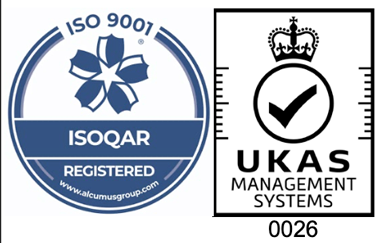An Essential Guide to Neoprene Rubber
29th March, 2022
Neoprene rubber is a synthetic material that is highly applicable for a variety of industries and environments, due to the properties the material possesses. Keep reading to find out more about neoprene rubber.
What are the properties of Neoprene?
Originally developed as an oil-resistant alternative to natural rubber, neoprene rubber is highly resistant to sunlight, oxidation, ozone, and a range of petroleum derivatives.
Neoprene rubber has an operational temperature range of between -40° to + 100°C, which combined with the material’s high levels of resistance to water and chemicals, makes this rubber type suitable for a variety of environments.
How is Neoprene Made?
Neoprene rubber primarily consists of carbon and hydrogen atoms and is created through eliciting a chemical reaction with chloroprene.
Following this chemical reaction, polychloroprene chips are created. These chips are melted down and mixed with a variety of foaming agents and carbon pigments, with the mixture then being heated, allowing it to expand.
The final product you are left with following the process is neoprene rubber, which can be separated into neoprene sheets of differing thicknesses. Neoprene rubber sheets are used to create neoprene gaskets, seals, and other products.
What are the Benefits of Neoprene Rubber?
There are many benefits to using neoprene rubber, with the top benefits including:
Highly resistant – Neoprene rubber resists damage from sun, ozone, weather, extreme temperature, and flexing or twisting. In addition, neoprene is also resistant to oil and ammonia.
Cost effective – Compared to other rubber materials, neoprene is relatively affordable and has lasting durability.
Versatility – The versatility of this rubber has proven useful in a wide range of applications. Common uses of neoprene rubber in industrial applications include gaskets, hoses, and corrosion-resistant coatings.
Minimal Environmental Waste – Whilst neoprene is a synthetic material, it is environmentally friendly, as it is made with a natural substance, chloroprene. As a result, the manufacturing process of neoprene rubber does not produce harmful waste products.
What Can Neoprene Rubber Be Used For?
Due to the vast properties of this rubber, neoprene is highly versatile and used across a range of industries. Neoprene is commonly used in the following industries:
Construction industry – Due to neoprene’s high strength, ozone resistance and weather performance, it is widely used throughout the construction industry. Typical applications in this industry are for custom window seals, gaskets, elevator astragals, and bridge and highway seals.
Marine Industry – Neoprene is regularly used for as a seal within the marine industry, due to the material’s high resistance to water.
Mass transportation industry – Neoprene rubber is used within the transportation industry, as it possess the properties that meet the exceptionally high Smoke-Flame-Toxicity requirements.
Automotive industry – Neoprene is commonly used within the automotive industry, with typical applications being as vibration mounts, CVJ boots, shock absorber seals, power transmission belts, and more.
Cable and wire industry – Due to natural rubber having lower resistance to flame, chemical, heat, weathering, and ozone resistance, neoprene is a popular choice of material in the cable and wire industry.
Aquaseal Rubber
At Aquaseal Rubber, an extensive range of our products are available in neoprene, including watertight hatch seals, rubber seals, sheeting, hose and tubing, sponge and foam, and gaskets. See the full range of products we offer in neoprene rubber here or get in touch with our specialists for the top rubber solutions.


